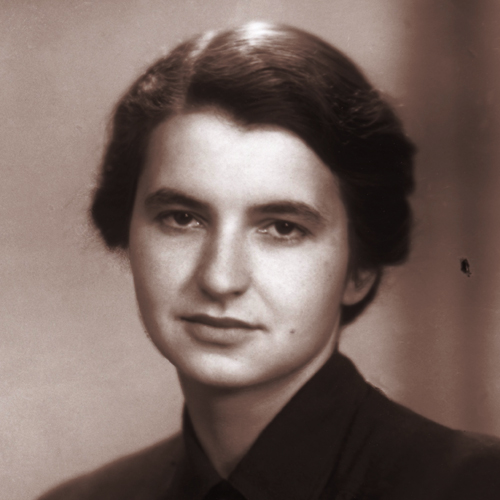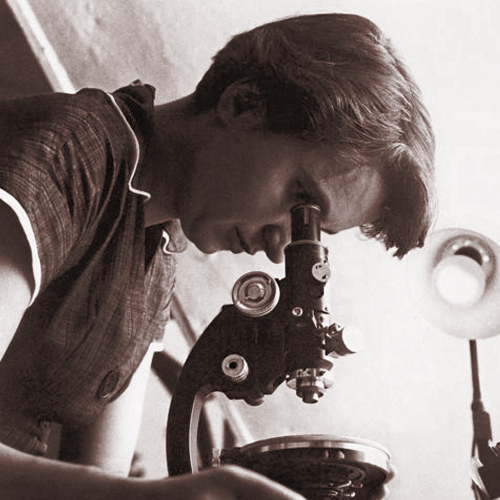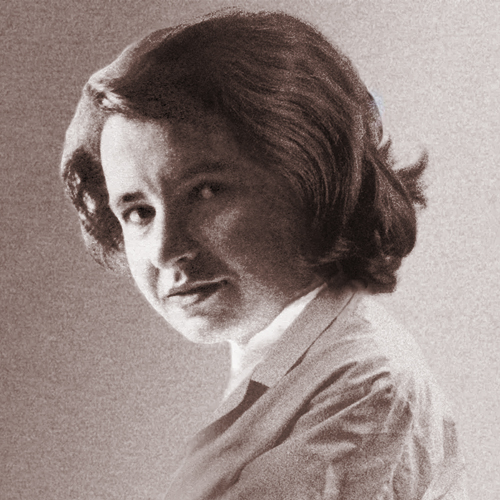
Rosalind Franklin
(1920–1958)
Known for: Her critical contributions to the discovery of the DNA double helix
Born: July 25, 1920 – London, England
Died: April 16, 1958 – London, England
Nationality: British
Field: Chemistry, Biophysics, Crystallography
Early Life and Education
Born into an educated, upper-middle-class Jewish family, Rosalind was raised in an environment that valued learning and public service.
Attended St Paul’s Girls’ School, where she excelled in science and mathematics.
In 1938, she enrolled at Newnham College, Cambridge, where she studied chemistry.
She completed her Ph.D. at Cambridge University in 1945, focusing on the physical chemistry of coals, which helped in the war effort.
Early Scientific Career
After World War II, Franklin worked at the Laboratoire Central des Services Chimiques de l’État in Paris, where she mastered X-ray crystallography — a technique that became central to her future work.
In 1951, she returned to London and joined King’s College London, where she applied her X-ray skills to study the structure of biological molecules — including DNA.
Timeline: Rosalind Franklin

1920 – Born
Born on July 25, 1920, in London, England, into a well-educated Jewish family.

1941 – Earned Ph.D.
Received her Ph.D. from Cambridge University for research on the physical chemistry of coal and carbon.

1947 – X-ray Work in Paris
Worked in Paris and mastered X-ray diffraction techniques used to study molecular structures.

1951 – Joined King's College
Returned to London to study DNA using X-ray crystallography at King’s College.

1952 – Captured Photo 51
Took the famous X-ray diffraction image “Photo 51,” crucial to discovering the DNA double helix.

1953 – Moved to Birkbeck College
Studied viruses like tobacco mosaic virus and made significant advances in virology.

1958 – Passed Away
Died from ovarian cancer at age 37. Her work was later recognized as foundational to molecular biology.
Groundbreaking Work on DNA
At King’s College, Franklin captured “Photograph 51”, one of the clearest images of DNA ever taken using X-ray diffraction.
This photograph revealed the helical structure of DNA — vital to understanding its double helix.
Her data was shared — without her knowledge or permission — with James Watson and Francis Crick at Cambridge, who were also working on DNA’s structure.
Using her image and notes, Watson and Crick published their famous model of DNA in 1953 in Nature, crediting Franklin briefly, but not as a key contributor.
Photograph 51 is now iconic — a symbol of both scientific genius and ethical controversy in science.
Later Research Contributions
After leaving King’s College in 1953, Franklin moved to Birkbeck College.
There, she made significant contributions to the understanding of:
RNA structure
Tobacco mosaic virus (TMV)
Poliovirus
Her research laid the groundwork for molecular virology, a field that would grow immensely in later decades.
Challenges as a Woman in Science
Franklin faced significant gender discrimination at King’s College:
She was excluded from male-only discussions.
Often marginalized in team meetings.
Despite this, she persisted with her rigorous, detail-oriented research style and maintained scientific integrity.
Death and Legacy
In 1956, Franklin was diagnosed with ovarian cancer, likely linked to radiation exposure from her research.
She continued working until shortly before her death on April 16, 1958, at just 37 years old.
Recognition (Posthumous)
Franklin’s role in the discovery of DNA was not fully recognized until many years after her death.
James Watson, Francis Crick, and Maurice Wilkins were awarded the 1962 Nobel Prize in Physiology or Medicine — Franklin had died by then and Nobel Prizes are not awarded posthumously.
Today, she is honored as a scientific icon and feminist figure.
Honors include:
The Rosalind Franklin Institute in the UK
Rosalind Franklin University of Medicine and Science (USA)
“Franklin Crater” on the Moon named after her
A Mars rover, part of the ESA ExoMars mission, named “Rosalind Franklin”
Legacy in Science
Rosalind Franklin’s legacy represents:
The importance of experimental science
The need for integrity and credit in research
The struggles and resilience of women in STEM

Discover the untold stories of women who shaped the world. Our platform is dedicated to celebrating the lives and legacies of extraordinary women—artists, scientists, educators, and activists—whose contributions have often been overlooked in mainstream history.